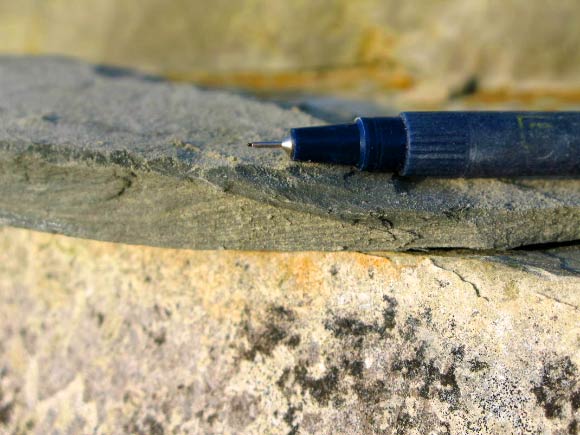According to Dr. Martin Smith, a paleontologist at Durham University, UK, a fossil dating from the Silurian period of the Palaeozoic era, about 440 million years ago, is not only the oldest example of a fossilized fungus, but is also the oldest fossil of any terrestrial organism yet found.
This early fungus, known as Tortotubus protuberans, displays a structure similar to one found in some modern fungi, which likely enabled it to store and transport nutrients through the process of decomposition.
“During the period when this organism existed, life was almost entirely restricted to the oceans: nothing more complex than simple mossy and lichen-like plants had yet evolved on the land. But before there could be flowering plants or trees, or the animals that depend on them, the processes of rot and soil formation needed to be established,” said Dr. Smith, who is an author of a paper published in the Botanical Journal of the Linnean Society.
He found that Tortotubus protuberans had a cord-like structure, similar to that of some modern fungi, in which the main filament sends out primary and secondary branches that stick back onto the main filament, eventually enveloping it.

Selection of filaments of Tortotubus protuberans from Gotland, Sweden, showing stages in development of filamentous envelope. Image credit: Martin R. Smith.
This cord-like structure is often seen in land-based organisms, allowing them to spread out and colonize surfaces.
In modern fungi, the structure is associated with the decomposition of matter, allowing a fungus colony to move nutrients to where they are needed – a useful adaptation in an environment where nutrients are scarce and unevenly distributed.
In contrast with early plants, which lacked roots and therefore had limited interaction with activity beneath the surface, fungi played an important role in stabilizing sediment, encouraging weathering and forming soils.
“What we see in this fossil is complex fungal ‘behavior’ in some of the earliest terrestrial ecosystems – contributing to soil formation and kick-starting the process of rotting on land,” Dr. Smith said.
“A question, however, is what was there for Tortotubus protuberans to decompose.”
“It’s likely that there were bacteria or algae on land during this period, but these organisms are rarely found as fossils,” he added.
_____
Martin R. Smith. Cord-forming Palaeozoic fungi in terrestrial assemblages. Botanical Journal of the Linnean Society, published online March 2, 2016; doi: 10.1111/boj.12389








